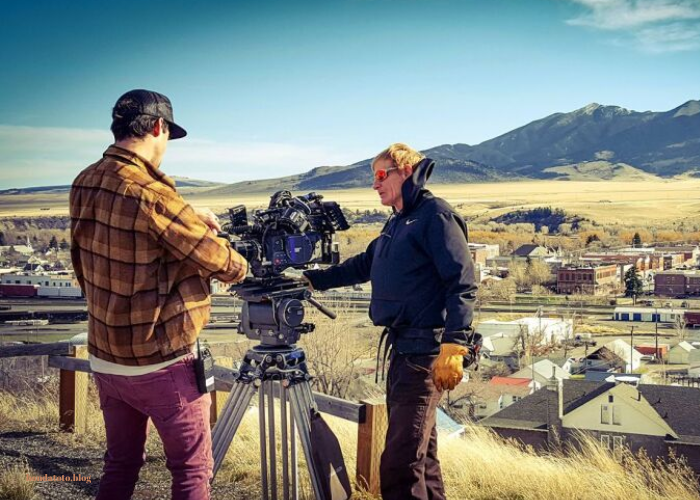In the dazzling world of cinema, the final product that graces our screens is often the result of a complex and multifaceted production process. From conceptualization to distribution, the journey of a film involves an intricate dance of creativity, technology, and logistics. This article delves into the behind-the-scenes magic of today’s biggest film productions, revealing the artistry, innovation, and teamwork that bring blockbuster movies to life.
The Genesis of a Film: From Concept to Script
Every film begins with an idea, but transforming that idea into a compelling screenplay involves a meticulous process. Screenwriters are the architects of the cinematic world, crafting scripts that serve as the blueprint for the entire production. The script undergoes numerous revisions as it passes through the hands of producers, directors, and sometimes even actors. During this phase, the story’s themes, dialogues, and character arcs are fine-tuned to ensure they resonate with audiences.
Pre-production: Laying the Foundation
Once the script is finalized, pre-production begins. This phase is crucial for laying the groundwork for the film. Producers and directors work on assembling a talented team, which includes casting directors, production designers, and location scouts. Casting is a meticulous process that involves auditions and screen tests to find the perfect actors who can bring the characters to life.
Production designers and art directors play a pivotal role in visualizing the world of the film. They design sets, costumes, and props that reflect the film’s tone and setting. For period dramas or sci-fi epics, the attention to historical accuracy or futuristic aesthetics can be painstaking. Location scouts, on the other hand, search for the perfect filming locations that match the script’s requirements, whether it’s a bustling cityscape or a serene countryside.
The Production Phase: Lights, Camera, Action!
The production phase is where the magic truly happens. This is the stage where all the pre-planned elements come together. The cast and crew work long hours on set, capturing scenes according to the shooting schedule. Directors guide the actors, ensuring their performances align with the vision of the film. Cinematographers are responsible for capturing the film’s visuals, using a combination of camera angles, lighting, and lens choices to convey the desired mood and tone.
One of the most critical aspects of the production phase is the coordination of various departments. The sound department records dialogue and ambient sounds, while the costume and makeup teams ensure the actors look the part. The production design team oversees the construction and decoration of sets, ensuring they match the director’s vision. This coordination is essential to maintaining continuity and ensuring that each scene seamlessly integrates into the overall narrative.
Special Effects and Post-production: Crafting the Final Product
Special effects (SFX) and visual effects (VFX) are integral to modern filmmaking, especially for genres like sci-fi, fantasy, and action. SFX refers to practical effects created on set, such as explosions or weather effects, while VFX involves digital enhancements added in post-production. The VFX team uses computer-generated imagery (CGI) to create spectacular visuals that would be impossible or impractical to achieve physically. This can range from fantastical creatures and epic battle scenes to realistic de-aging of actors.
Post-production is where the film is truly polished. Editors work with the raw footage to assemble the film into its final form. This involves cutting scenes, rearranging sequences, and ensuring a smooth narrative flow. Color correction and sound mixing are also crucial during this phase. Colorists adjust the color palette to enhance the film’s visual appeal, while sound designers and mixers work on creating the film’s auditory experience, including dialogue, sound effects, and the musical score.
The Role of Music and Sound: Enhancing the Experience
Music and sound play a significant role in shaping the emotional impact of a film. Composers work closely with directors to create a score that complements the film’s tone and enhances the storytelling. The score can evoke a range of emotions, from tension and excitement to sadness and joy. In addition to the score, soundtracks often feature popular songs that help set the mood and appeal to audiences.
Sound design involves creating and integrating various audio elements, such as ambient sounds, sound effects, and foley work. Foley artists recreate everyday sounds, like footsteps or door creaks, to enhance the realism of the film. The careful layering of these sound elements contributes to a more immersive viewing experience.
Marketing and Distribution: Bringing the Film to Audiences
Once the film is complete, the focus shifts to marketing and distribution. Marketing teams develop strategies to promote the film through trailers, posters, social media, and press releases. The goal is to generate buzz and build anticipation before the film’s release. Press tours, interviews, and film festivals also play a significant role in creating excitement and garnering reviews.
Distribution involves getting the film into theaters and, increasingly, onto streaming platforms. Distribution deals are negotiated to secure a film’s release in various markets, both domestically and internationally. The choice of distribution channels can significantly impact a film’s reach and success.
The Collaborative Spirit: Teamwork in Film Production
One of the most remarkable aspects of film production is the collaboration between different departments and individuals. A successful film is the result of the combined efforts of many talented professionals, each bringing their expertise to the project. The synergy between directors, producers, writers, actors, and technical teams is essential for creating a cohesive and engaging film.
The Evolution of Film Production: Embracing Technology
The landscape of film production has evolved dramatically with technological advancements. Digital cameras and editing software have revolutionized how films are made, allowing for greater creativity and efficiency. Virtual reality (VR) and augmented reality (AR) are beginning to influence filmmaking techniques, offering new ways to immerse audiences in cinematic experiences.
In conclusion, the behind-the-scenes world of film production is a testament to the artistry and dedication of countless professionals. From the initial spark of an idea to the final cut that premieres on the big screen, the process is a complex interplay of creativity, technology, and teamwork. As audiences, we are invited to witness the culmination of this elaborate process, enjoying the fruits of the collective effort that brings our favorite films to life.







